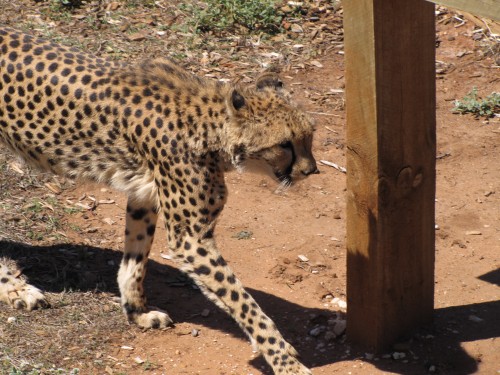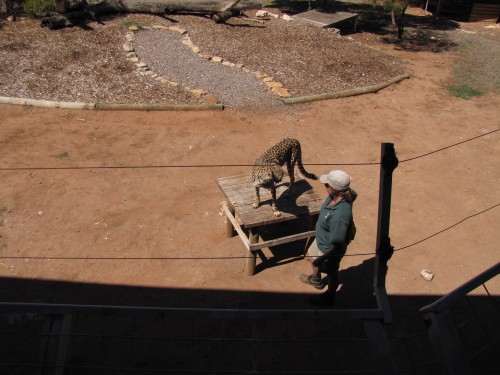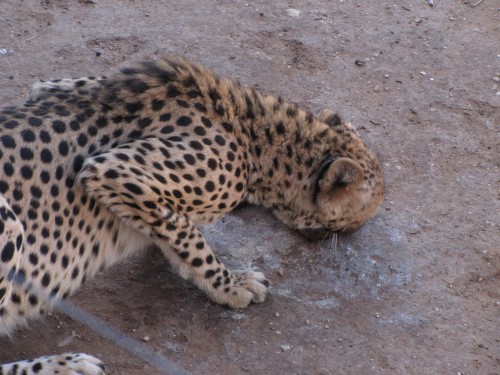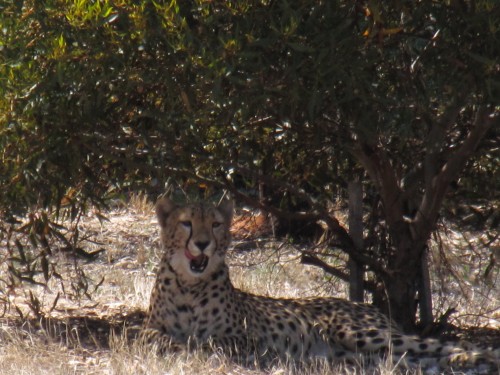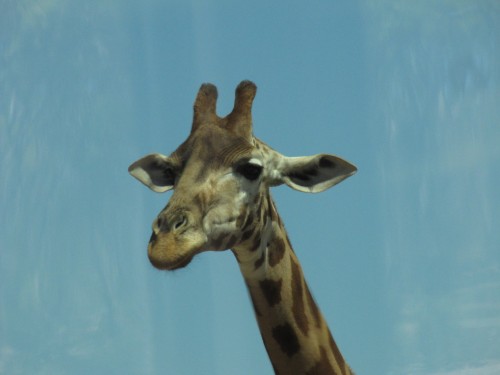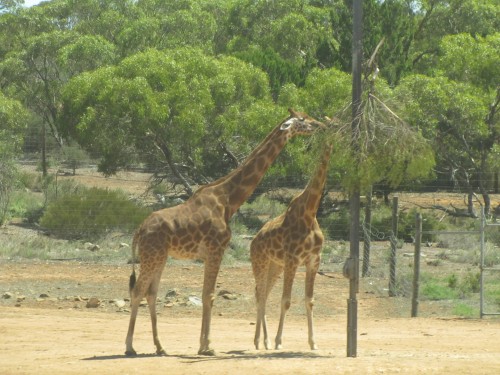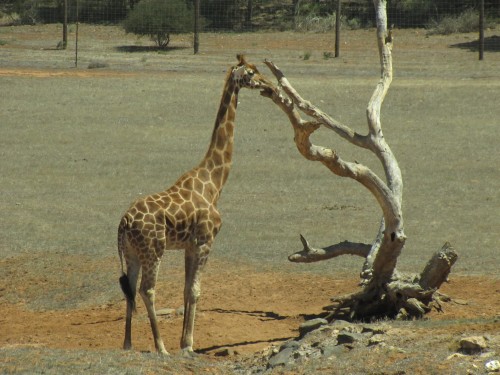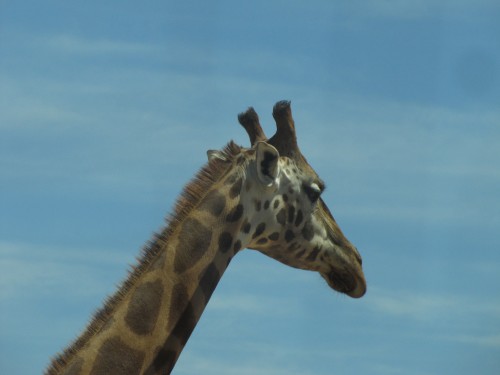Cheetah encounter, Monarto Zoo
The cheetah is one of the most admired animals on display at the Monarto Zoo in South Australia. Currently there are eight cheetahs in the collection at Monarto. Over recent years they have been very successful in their breeding programme. I applaud this , and is one of the reasons I am a life member of this and Adelaide Zoo (membership covers both zoos). For example, Monarto Zoo has been instrumental in the reintroduction of the Przewalski’s Horse to its natural habitat in Mongolia where it was once listed as extinct.
In its natural habitat the cheetah of Africa is highly endangered, though there are still about 7,000 in the wild. Their numbers are declining rapidly due to a combination of hunting, environmental destruction and disease. I hope that it will never get to the point that the only place to see this amazing animal is in places like Monarto Zoo. Successful breeding programmes go a long way ensuring that this will not happen, but if the worst does happen, there is a viable gene pool in zoos around the world.
I have not experienced the thrill of seeing any of the cheetahs at Monarto at full speed, but one of the tour bus guides once informed us that they are very quick, able to catch the cunning local ravens before they could fly away. This was even in their relatively limited quarters. Their largest enclosure is some 200 metres long, and this seems to be enough to stalk and catch the birds. Any rabbits which have foolishly made it into the enclosure never last more than a few seconds either.
On our most recent visit we timed our visit to coincide with the feeding time of one of the cheetahs, as shown in today’s photos. This individual was hand reared and is therefore quite tame. While it was fascinating to get this close to this cheetah, there are almost daily opportunities to actually interact with the cheetah. (Check the web site for details.)
Further reading:
- Monarto Zoo Cheetahs
- Cheetah interactive at Monarto Zoo
- Monarto Zoo – general information about the zoo
- Adelaide Zoo – South Australia’s main zoo site
Giraffes at Monarto Zoo South Australia
Giraffes always fascinate me. Partly because of their enormous height and partly because of the way they move. As for their height, males can grow to over 5 metres and the view from up there must be quite amazing. Of course it is very handy for grazing on the foliage of trees. At Monarto Zoo in South Australia where I took this series of photos earlier this year, any existing trees in their enclosure have been well and truly trimmed. The keepers try to simulate their natural environment by tying branches at the top of a tall pole (see below). Much easier for the giraffes than stretching down to the ground to eat the grass. With such a long neck, reaching the ground would be a decidedly difficult thing to do.
While visitors to the zoo do not often see the giraffes at full gallop, they can be remarkably agile over short distances considering their great size. Usually I have just observed them gracefully walking, again remarkable considering their size and weight; they weigh over a tonne (1,100 kg). The giraffe breeding programme at Monarto has been very successful over the years and the zoo now boasts the largest herd in Australasia.
Monarto Zoo is one of the largest open range zoos in the world and is a ten minute drive from my home in Murray Bridge. The area was designated many decades ago as a satellite city to our state capital, Adelaide, but plans fell through before any building could commence. The zoo is a part of the world renowned Adelaide Zoo.
Further reading:
- Find out more about giraffes from the zoo web site here
- Monarto Zoo
- Adelaide Zoo
The Royal Stables in Meknes, Morocco
The Royal Stables in Meknes are one of the more impressive buildings we visited during our visit to Morocco. They were built during the rule of Moulay Ismail (born 1645 and lived until 1727). He was a ruthless leader and he had a great love of horses. This impressive building is all the more remarkable when you realise the size of it, the engineering feat accomplished to build and maintain it and what it achieved.
The stables housed no less than twelve thousand horses and their attendants, a groom and a slave for each one. The horses were treated far better than their carers. To build such a facility was amazing, but the story doesn’t end there. Huge granaries (see next photo) were also constructed to store the grain to feed the horses. Feeding so many horses would have been difficult enough, but the stores held a twenty year supply of grain. Thick walls were constructed and a forest was planted on the roof, all in order to keep the grain cool.
You can see more photos of these stables tomorrow, and also read about them on the Morocco.com website (click here).
Tammar Wallaby, Adelaide Zoo
Tammar Wallabies are found in south western Western Australia. They inhabit coastal mallee scrublands and eucalypt woodlands. They tend to stay in dense vegetation during the day and feed mainly at night.They were previously also found in South Australia, but land clearing and introduced pests like foxes and cats are thought to have made them locally extinct in this area.
A feral population was established on a New Zealand island, and in the last decade a large number of these had been repatriated to Monarto Zoo (a part of Adelaide Zoo) and then reintroduced into Yorke Peninsula where they have established breeding populations.
You can read more about this species on the zoo website here.
